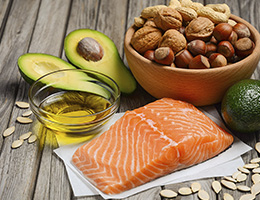
When it comes to heart disease protection, you shouldn’t underestimate the power of your plate and the choices you make in the kitchen. That’s because healthy lifestyle habits—including eating right—can make a big difference in your heart health.
Best of all? Creating heart-healthy meals that are also delicious and satisfying might be easier than you think. You can even begin today!
To start, try adopting some of these heart-friendly foodie tips, courtesy of the American Heart Association (AHA) and the Academy of Nutrition and Dietetics:
When meat is on the menu, let it be lean. Choosing lean meat and poultry is one way to cut back on saturated fat, which can raise your blood cholesterol. When buying red meat, pick leaner cuts like loin, round, choice or select. With poultry, go for white-meat breasts rather than legs or thighs.
To cut down on even more fat:
- Trim away the visible fat on meat and poultry.
- Remove the skin from chicken or turkey.
- Use a strainer to drain off excess fat from cooked ground meat.
- Use a spoon to skim off fat from leftover stews or soups before reheating.
- Skip the meat sometimes. Serve up meatless proteins, like beans, peas or tofu. For example, you can use beans to make a veggie chili or a whole-wheat burrito.
Get hooked on fish. Serve up fatty fish, like salmon or albacore tuna, twice a week. They’re rich in heart-healthy omega-3 oils.
Ditch the frying pan. Instead, try the following methods for cooking with little or no fat:
- Roasting, grilling or broiling meat or poultry. Use a rack in your pan so that the fat drips away from your food.
- Sautéing or stir-frying veggies, poultry or seafood. Use a nonstick pan. That way you'll only need to add just a tiny bit of nonfat cooking spray or vegetable oil instead of shortening or butter.
- Poaching chicken or fish.
- Steaming vegetables to retain their flavors and nutrients.
Season with little or no salt. Cooking with a lot of salt could contribute to your risk of high blood pressure. To cut back without sacrificing taste, try seasoning foods with herbs and spices, like oregano, basil, paprika, curry, thyme or rosemary. And try adding peppers—like diced jalapeños—onions, garlic or lemon juice.
Choose healthier oils. Cook with liquid vegetable oils, such as canola, olive or soybean. They’re better for your heart than solid fats, like butter. The reason? Liquid vegetable oils contain mostly unsaturated fats. When used in place of saturated fats, unsaturated fats may help lower blood cholesterol. You can often use them for cooking or in recipes that call for butter or shortening.
Update your recipes. By swapping ingredients, you can make some of your favorite recipes a little better for your heart. For example:
- Use two egg whites in place of one egg yolk.
- Use low- or nonfat versions when recipes call for milk (and when you’re thirsty for a cold glass of milk).
- Try lower-fat cheeses, like reduced-fat feta or part-skim milk mozzarella.
- Serve up more fiber-rich grains by using brown rice and whole-wheat pastas instead of regular pastas or white rice.
Finally, you might want to collect some heart-healthy recipes you find online or buy a heart-friendly cookbook.
Reviewed 5/23/2023